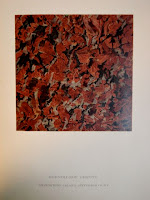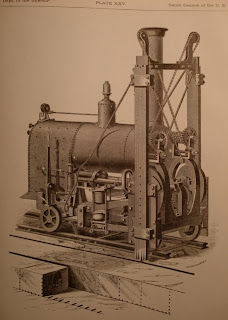
A happy group of explorers trodding across one of Seattle’s last cobblestone streets
Between the 1890s and 1910s, sandstone cobbles were a a popular road-paving material in Seattle. The most commonly used varieties came from quarries in Wilkeson, a small town about 45 miles south of Seattle. Workers could easily cut the brick-sized blocks, which provided good traction for horses, although horse shoes did wear down the stone. And the stone cobbles lasted longer and created less of a mess than the mud or wood of the past. (Manhattan also has a few cobblestone streets made from the 450-million year old Quincy granite.)

Quincy Granite cobblestones in Greenwich Village
The Wilkeson sandstone lithified from thousands of feet of sand deposited 40 to 50 million years ago in the Eocene Period when western Washington was flat and subtropical. Palm trees, swamp cypresses, and tree-sized ferns grew in the moist (40-100 inches of rain), bayou-like environment. Waves from an ocean that spread to the west washed ashore on beachfront property, now covered by the urban metropolises along Puget Sound. The only mountains that existed rose far to the east along the Washington-Idaho border. Rivers and streams washed out of those mountains and dropped sand in a coastal lowland dotted with seasonal lakes, swamps, and lagoons.
In addition to sandstone cobbles, brick was another important paving material and can still be found on a few Seattle streets. Local manufacturers used a clay deposited in a proglacial lake, which formed in advance of the ice sheet that covered Seattle during the last Ice Age. A production capacity of 70,000,000 bricks a year made King County the largest producer of paving brick in the country. At one time, these bricks covered streets in Portland, San Francisco, Tokyo, and Los Angeles, as well as roads in Chile, Argentina, and India.
One other local building material, the Index granite, appears on local streets. It formed 34 million years ago during subduction of the Juan de Fuca plate under the North American continent. The Index was used primarily for curbs and can still be found in a few older neighborhoods of Seattle. (One way to get a feel for the age of a neighborhood is to look at the curbs. Old ones are granite; newer ones have concrete with a metal rim, particularly on corners; and modern ones are only concrete.)
According to the last official survey I could find, conducted in 1993, only 93 of these historic streets remain in Seattle; most have been paved over, their stories lost to drivers who don’t want the jarring ride. I do not mind them. I like the connection to the past and consider it a privilege to drive over the ancient cobbles and rustic bricks, although I try to take these roads when no else is in the car with me.


